Search the Special Collections and Archives Portal
Search Results
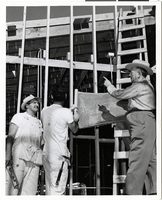
Photograph of men building the Sands Hotel (Las Vegas), circa 1952
Date
Archival Collection
Description
Three men consulting a blueprint during the construction of the Sands. The following names were listed as photographers: Joe Buck, Don English and David Lees.
Site Name: Sands Hotel
Address: 3355 Las Vegas Boulevard South
Image
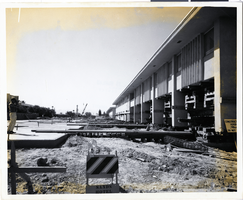
Photograph of a wing of the Sands Hotel being moved (Las Vegas), December 20, 1964
Date
Archival Collection
Description
A wing of the Sands being moved, presumably in preparation for building the tower. The following names were listed as photographers: Jerry Abbot, Joe Buck, Don English and David Lees.
Site Name: Sands Hotel
Address: 3355 Las Vegas Boulevard South
Image
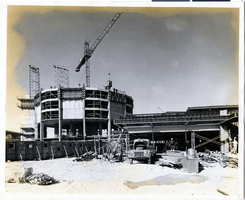
Photograph of the Sands Hotel tower under construction (Las Vegas), February 24, 1965
Date
Archival Collection
Description
The tower of the Sands under construction.
Site Name: Sands Hotel
Address: 3355 Las Vegas Boulevard South
Image
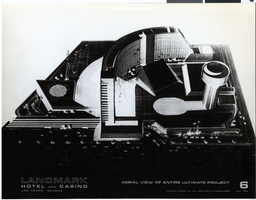
Photograph of the Landmark Hotel and Casino expansion model (Las Vegas), May 1, 1982
Date
Archival Collection
Description
Model of the proposed expansion for the Landmark Hotel and Casino.
Site Name: Landmark Hotel and Casino
Address: 364 Convention Center Drive, Las Vegas, NV
Image
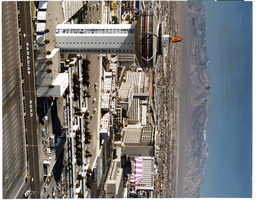
Photograph and aerial view of the Landmark Hotel and Casino showing Paradise Road (Las Vegas), circa 1970
Date
Archival Collection
Description
Aerial view of the Landmark Hotel and Casino.
Site Name: Landmark Hotel and Casino
Address: 364 Convention Center Drive, Las Vegas, NV
Image
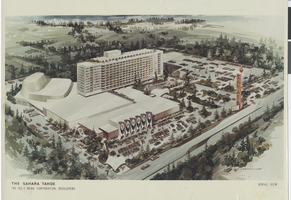
Photograph of a rendering of the Sahara Tahoe (Stateline, Nev.), circa 1965
Date
Archival Collection
Description
Artist's conception of an aerial view of the Sahara Tahoe. Rendering made by Siegfried Knop. Del E. Webb Corporation, developers.
Site Name: Sahara Tahoe
Address: US Highway 50, Stateline, NV
Image
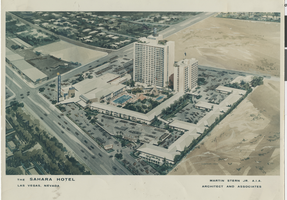
Photograph of a rendering of the Sahara Hotel and Casino proposed second tower (Las Vegas), before 1963
Date
Archival Collection
Description
Artist's conception of the Sahara complex after the addition of the 24 story tower. Color rendering completed by Siegfried Knop.
Site Name: Sahara Hotel and Casino
Address: 2535 Las Vegas Boulevard South
Image
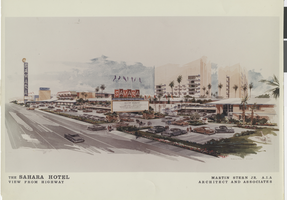
Photograph of a rendering of the Sahara Hotel and Casino (Las Vegas), circa 1963
Date
Archival Collection
Description
Concept drawing of the Sahara expansion, possibly the 1963 expansion of the convention center area. Color rendering by Siegfried Knop.
Site Name: Sahara Hotel and Casino
Address: 2535 Las Vegas Boulevard South
Image
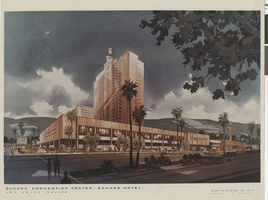
Photograph of a rendering of the Sahara Convention Center (Las Vegas), October, 1966
Date
Archival Collection
Description
Artist's rendering of the Sahara Convention Center addition that was later turned into the buffet and roller coaster starting point. Stamped on back of photo: "Newell Color Lab Inc. reorder No. 5687, HO 9-7355." Color rendering by Atkins.
Site Name: Sahara Hotel and Casino
Address: 2535 Las Vegas Boulevard South
Image
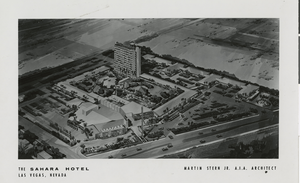
Photograph of a rendering of the Sahara Hotel and Casino complex (Las Vegas), circa 1957
Date
Archival Collection
Description
Artist's birds-eye view conception of the Sahara Hotel complex with the addition of the first tower. Black and white rendering by Siegfried Knop.
Site Name: Sahara Hotel and Casino
Address: 2535 Las Vegas Boulevard South
Image
